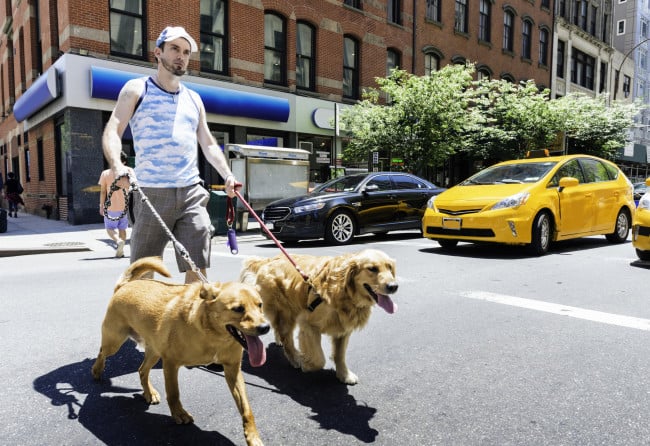My landlord wants to screen my dog. What does that process involve?

Don't look so sad, Fido. A building's pet screening just wants to ensure you're going to be a good canine citizen.
Pixabay
I want to rent an apartment in a pet-friendly building. I know all my financials will check out, but the management company wants to screen my dog. What does the screening process involve?
There may be plenty of pet-friendly apartment buildings in NYC, but some landlords and management companies do require potential dog residents to undergo temperament assessments, behavior training, or another type of evaluation before you two can move in.
No, it’s not a sneaky way of restricting certain breeds; many buildings do welcome dogs of all types and sizes. These evaluations are simply to ensure that your dog will be a good canine citizen.
To learn more about the process of screening dogs, Brick Underground talked to Adam Light, co-founder of Throw Me a Bone, which assesses dogs for the eight residential buildings in NYC where it has pet-care facilities, including 555TEN, 33 Bond, and The Eugene.
“We believe that there are no bad dogs, no bad breeds—it’s the way that dogs are raised,” Light says. “What we’re assessing is the dog’s ability to listen and obey, and, most importantly, how they interact with other dogs.”
[Editor's Note: Realty Bites tackles your NYC rental questions. Have a query for our experts? Drop us an email. We respect all requests for anonymity.]

What to expect at your dog’s pet screening
The first step, Light says, is meeting with you and your dog at one of their facilities, where they’ll go through a number of commands to see how it reacts to the request coming from someone who is not you.
“Even if the dog doesn’t know ‘sit,’ we can work with them within just a few minutes to get them to understand,” he says.
Your dog will then be taken for a walk around the building and outside so its behavior on a leash and in a new environment can be observed.
“We’re sort of taking them on a test run of all the situations that may become problematic—going in and out of an elevator, going around a corner outside, meeting another dog for the first time while out on a walk,” Light says. “Some dogs tend to be leash-aggressive. We like to run through all those scenarios while we have the dog in our hands, in our professional control.”
You should also know that this screening process is as much for you as it is for your four-legged friend.
“Some parents, they don’t think anything’s wrong with their children, and pet parents can be the same way,” Light says. “A big part of the assessment is to determine if the owner and potential resident has a realistic view on their dog’s behavior and if they’re willing to work with us if any behavioral modification needs to be done.”
Red flags pet screeners look for
During your pet’s assessment, screeners are looking for potential red flags such as lunging, bared teeth, stiff body language, raised hair on its back (did you know that’s called “hackles?”), and whether the dog is barking out of reaction or with intent to potentially attack, Light says.
“Are they just reacting with a bark and a little lunge, or are they pulling with all their might to get at this other dog to take action in some way, shape, or form?” he says. “We can determine the difference between those two reactions pretty quickly.”
After the pet screening

Throw Me a Bone’s pet screening process can take 30 minutes to an hour, and is done for free “to give every dog its fair chance of moving into a building,” says Light, above.
Their assessment is then shared with the building’s developer, who has the final say on whether or not you and your dog can move in.
“Every dog that we’ve assessed has been able to move into a building,” Light says.
How to prep your dog for a pet screening
Obviously, training your dog to know basic commands (sit, stay, come, down, etc) and how to walk on a leash is paramount. (Newsflash: This is actually something that should be done by all pet owners, not just those looking to move into a building that requires a pet screening.)
While you can DIY your dog’s training, “the most important thing and best thing any dog owner can do for their dog is to work with a certified professional trainer, especially as a young puppy because they’re more likely to be a sponge and listen and learn.” Light says. “It’s an investment that will pay in dividends for the life of your dog.”
If your dog is no longer a puppy, don’t fear the old adage that says you can’t teach an old dog new tricks. “It becomes a little more difficult, but it can be done,” Light says.
And remember: A tired dog is a happy dog, so be sure to go on regular brisk walks (Light recommends at least 30 minutes if possible).
“The more time outside socializing your dog in a healthy manner with other dogs, in a controlled environment, like a dog run or doggie daycare, will make sure there’s reinforcing positive behavior,” he says.


























